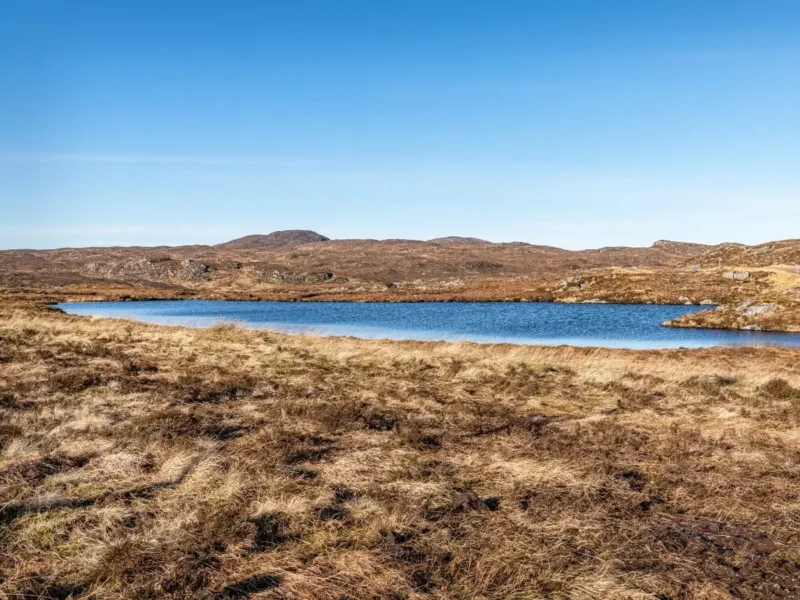On World Wetlands Day, we blog about the crucial services wetlands offer and their role in climate regulation, biodiversity protection, and promoting sustainability.
Can we rely on timeless peatlands when time is running out?
“The natural world is fading. The evidence is all around us…It will lead to our destruction.” These are the sombre words of Sir David Attenborough, who knows a thing or two about our natural world. Most have seen and acknowledge the challenge, but are equally (and understandably) daunted by the scale of it. ‘Where do I start?’ is a phrase common to us all.
On World Wetlands Day I reflect on one part of the challenge; peatland degradation, which is one (of many) threats facing our natural world. Here, in the UK it is estimated that over 80% of our peatlands are damaged. This is extremely worrying news when you consider the range of vital services they provide; from supporting biodiversity, soil formation and nutrient cycling, to being a regulator for our climate, water, waste and erosion processes. They also provide food and water, as well as play an important role in our cultural heritage.
Thankfully, peatlands are high on the agenda right now, and rightly so. Governments are putting much-needed focus onto (and crucially investment into) their protection. New laws are being passed to ban its use in horticulture, for example, and crucially new funds are being created to support restoration projects and initiatives.
However, these quiet, modest landscapes are often overlooked or misunderstood, and when I decided to study them for my MSc dissertation I had little idea of the wonders I was going to uncover. Let’s start with some facts:
- Peatlands cover just 12% of the UK’s land area, yet lock in 3.2 billion tonnes of carbon.
- Here in Scotland, peatlands store more than 25 times more carbon than all the vegetation of the UK, equivalent to 140 years’ worth of Scotland’s total annual greenhouse gas emissions (GGEs).
- Globally, peatlands store at least 600 billion tonnes of carbon – more than twice the carbon stored in all forests – and sequester 370 million tonnes of CO2 every year.
- ~70% of UK drinking water comes from upland areas dominated by peatlands, and these water quality services have been valued at £1.5bn.
They are impressive environments and will play an integral part in our fight against systemic environmental collapse. But how do peatlands actually provide these amazing services?
Sphanghum moss – the unsung hero
Sphagnum moss makes up the bulk of peatland vegetation, and is an indicator of a healthy peatland. Undoubtedly a beautiful and complicated genus in its own right, there are more than 300 species (including the spectacular, fiery red rubellum), and they hold some unique properties.
Able to store up to eight times their own weight in water, sphagnum provides invaluable water cleaning services, filtering the water and supporting the purification process. But it also plays an important role in water retention by helping to ensure peatlands remain waterlogged, which has the added benefit of helping to prevent flooding downstream – important as extreme weather and flooding is already plaguing our communities.
Most critically, sphagnum leads to the recovery of peatland functions, namely peat accumulation. It captures the water and creates the waterlogged conditions needed for decomposition and peat formation, and the subsequent locking in of carbon. It might take a while, but it is highly effective. Anecdotal evidence from my own research found that positive responses to restoration could be seen in a few short years, even if restoring functioning peatlands and their carbon capturing potential can take much, much longer.
Where we can help
Speaking to peatland practitioners across the UK and Republic of Ireland. I found examples of great practice and wonderful local success stories. I also heard from passionate, dedicated people and organisations who were working tirelessly to restore peatlands, often with small budgets on severely degraded sites.
My research found that one of the major challenges (aside from funding, which unsurprisingly topped most folks’ list) relates to landowners and site managers not having the necessary expertise to design or implement sustainable restoration options. A second challenge is the miscommunication (or at times a lack of communication) between stakeholders – remember peatlands can be vast areas, with numerous overlapping communities and priorities.
On both these challenges, organisations like our own can support. We can help local wetland guardians to design and implement sustainable solutions. But we can also act as a collaborator and enabler in restoration and habitat creation projects, bringing together a range of stakeholders who may often have competing priorities, and advising or leading projects to deliver positive change. We must start these discussions now, even if the effects might not be seen for decades to come.
One of the appeals of joining Ecus was its expertise and experience in wetland habitat design, creation and restoration. In the past, we have delivered projects with the likes of the RSPB, Highways England, local councils, and local wildlife trusts on a range of wetland projects – from restoring rivers, to designing scrapes for breeding and wintering birds, to developing sustainable drainage systems around our transport infrastructure. And we have the experience, insight and drive to do much, much more.
Engage, collaborate, act
Thinking ahead, as the understanding of the nature-based value of our wetlands and peatlands increases and the plight of our environment worsens, there will (and there must) be more opportunities for positive interventions. And remember this is not just about capturing carbon, but about cleaning water, preventing erosion, alleviating flooding, not to mention providing habitats for wildlife.
We’re keen to hear from innovative entrepreneurs and SMEs, forward-thinking councils and progressive landowners, academics and thought-leaders, charitable organisations, businesses and community groups –anyone who shares our sense of urgency and who wants to collaborate on initiatives and projects to deliver real, scalable change. From wetland restoration projects initiatives, to large-scale infrastructure monitoring and impact assessment projects, we are open to collaboration.
Sir David rightly warned of the destruction of our natural world. The legendary Christine Figueres offered a more upbeat vision, saying, “this is the decade and we are the generation”. As such, I’m fighting for our dreich peatlands as well as our resplendent reefs, so that in the near future we need not rely on Sir David’s documentaries to remind us of the former majesty of our natural world.







